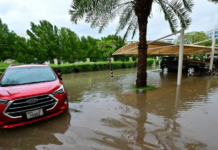When John Maynard Keynes turned conventional economic thinking on its head in 1936, he not only laid the foundation for present day macroeconomic theory and policy, but he also introduced the concept of the multiplier.
Any spending injection into the economy, such as the Quantitative Easing (QE) policy undertaken in recent years by the US and the Eurozone to revive their recession-hit economies, results in an increase in effective demand or GDP via a repeated sequence of consumer spending. While this is not an instantaneous process, GDP in an economy rises by a multiple of the original injection over a period of time.
Little did Keynes imagine then, in an era when the jet age and mass tourism did not exist, that one of the most powerful (and rarely mentioned) of all multipliers would be the tourism multiplier.
One reason for this is that unlike sporadic government injections into distressed economies, the tourism multiplier works 24/7 and all year round. And Keynes, writing during the Great Depression, when millions were out of work, would not have known that 80 years later tourism would become the largest employer on earth.
Today, one in 11 people in the world work in tourism or travel related industry. The industry generated some $8 trillion in turnover in 2016, according to the UN World Tourism Organisation (UNWTO).
The tourism multiplier is centred on infrastructure and works something like this. Once the essentials are in place – roads, transportation, communications and so on – an entire ecosystem of hotels, restaurants, and entertainment and leisure hubs quickly develops.
This investment, on the part of both the government and the private sector, gives rise to a multiplier effect via consumption spending trickling down through the economy. With the fundamentals in place, the tourists arrive and spend money and the multiplier kicks into operation once again, affecting yet another large swathe of the local population.
If we consider Dubai, its leaders and government clearly understood the far-reaching effects of organised tourism, perhaps not necessarily as an end in itself but as another, important way of diversifying the economy. Dubai, lacking natural tourist attractions, recognised fairly early on that its geographical juxtaposition – within eight hours flying time of approximately six billion people – was an asset. It succeeded due to a visionary, deliberate and proactive approach, working hard to invest initially in world-class infrastructure such as roads, airports, airlines and communications. This gave rise to ancillary infrastructure centred around hotels, restaurants, entertainment, shopping and leisure.
The infrastructure thus created has benefitted residents and visitors alike, and allowed Dubai to attract not just leisure tourists but business visitors as well. Dubai is now the premier trade show hub for a vast panoply of products and services in a region covering not only the greater Middle East, but Africa and other areas as well. One does not need to understand the mathematics of the multiplier to realise the add-on effects that this investment in infrastructure created. The results are palpable.
The UNWTO figures shows, 15 million visitors to the UAE pumped in some $16 billion directly into the economy in 2016. The vision for 2020, with the Expo expected to draw around five million visitors on its own, is to attract 20 million tourists – not an unreasonable scenario given the remarkable growth in tourism that has been witnessed so far.
Across the Arabian Sea lies India, a vast land with an outstanding endowment of diverse natural wonders, history, heritage, wildlife and cultural variety.
The tourism potential in India is undoubtedly huge. But in 2016 it attracted only eight million tourists – just over half of the UAE’s figures. Successive governments, both central and at the state level, for the past 70 years have simply failed to grasp the essential psyche of the revenue generating foreign tourist.
With today’s array of travel choices before them, tourists generally take world-class infrastructure on the ground for granted. Although there have been marked improvements in recent times basic infrastructure in India remains woefully weak. When you have one of the world’s most beautiful and best-loved monuments located in the midst of urban chaos, less intrepid tourists (the vast majority) will take another road.
The Indian government does not accord tourism the attention it deserves. Whether the government understands the effect of the tourism multiplier is a moot point. The multiplier cannot work without investment in infrastructure. Wonderful advertising slogans and e-visas without investments on the ground do not do the trick. Word of mouth does, and currently the word among visitors is that India can be ‘challenging’.
More importantly, tourism is a highly labour intensive industry. IT and other ‘glamour’ sectors do not have the capacity to absorb even a fraction of the fast-growing workforce in urban India. Tourism and its ancillaries do.
The beneficial effects of tourism on a nation’s economy are unquestionable. Nations are increasingly facing the dilemma of growing tourism rapidly while maintaining balance and sustainability.
A handful of forward-thinking countries, from Bhutan to Costa Rica to The Seychelles, are actively resisting the effects of the tourism deluge by setting limits on visitor entry and charting a new path for sustainable tourism.
The same focus on good governance and robust infrastructure to promote tourism as an engine of economic growth (as is the case with the UAE) can also be channelled towards environmental stewardship and equity. Today, as global warming becomes more threatening, and we live under the constant threat of war and terrorism and witness an alarming rise in populism and demagoguery, sometimes the only thing to look forward to is a really good trip. Khaleej Times.





![Before and after: See Dubai flooding from space [Photos] Vehicles drive through floodwater caused by heavy rain in Dubai on Thursday. Christopher Pike/AP](https://www.adomonline.com/wp-content/uploads/2024/04/image_2024-04-22_211326628-218x150.png)
